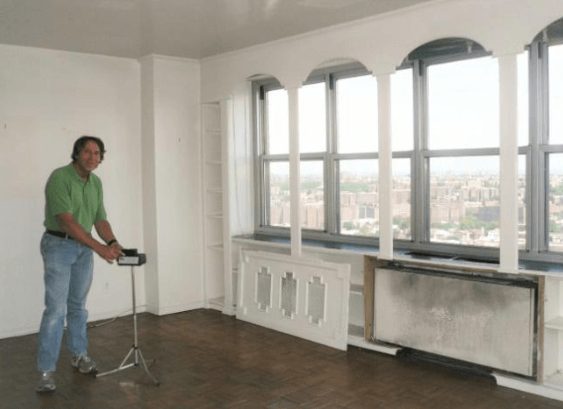Air Quality Testing
Air Quality Testing
Indoor air quality is something we at Certified Inspections get calls to investigate for both homes and commercial environments. Residential concerns generally manifest in either a family member feeling sick more often than usual or someone or everyone detecting an objectionable odor. When the affected people leave the house, they usually feel better. Sometimes it is only one member who feels sick or smells an odor and others don’t.
The types of complaints can typically involve headaches, congestion, scratchy throat, trouble breathing, a bad taste in the mouth, allergic symptoms, rashes, frequent colds, flulike symptoms and even cancer. Noxious odors may simply be intolerable to be around.
Commercial situations usually involve office settings but can also be more industrial warehouse settings. Just as with the residential setting, it can involve one or several employees. Usually, it is only a few who complain to their bosses, yet it is incumbent upon the management to have their concerns investigated, both out of ethical concerns for their health as well as for legal and civil liability.
The challenge facing an air quality tester is determining what exactly one is testing for? Most people are under the false assumption that we have some kind of magic machine that we turn on and it tells us what nasty things are in the air. Nothing could be further from the truth. The fact of the matter is that different pollutants require different testing equipment, and each type of equipment is designed to collect samples which need to be sent to a laboratory for analysis. Since various pieces of equipment are needed, and it is quite costly, the tester usually has to have them shipped from the lab for the specific job. Therefore, we need to know what equipment to order. How do we go about diagnosing this?
The challenge facing an air quality tester is determining what exactly one is testing for? Most people are under the false assumption that we have some kind of magic machine that we turn on and it tells
us what nasty things are in the air. Nothing could be further from the truth. The fact of the matter is that different pollutants require different testing equipment, and each type of equipment is designed to collect samples which need to be sent to a laboratory for analysis. Since various pieces of equipment are needed, and it is quite costly, the tester usually has to have them shipped from the lab for the specific job. Therefore, we need to know what equipment to order. How do we go about diagnosing this?

Generally, the procedure I follow is to ask as many relevant questions of the client to help discern what to test for. I inquire as to what the specific health symptoms are, how many people are being affected; in a commercial setting, what the facility is being used for, and in all settings, whether any unusual goods or services have been implemented recently, such as renovation or construction work, a change in cleaning service, pest control companies, etc.
My first inclination, unless given specific clues as to what to target, is to perform mold testing as it tends to be the most common complaint. If the client’s budget is limited, it is also a good place to start because I don’t need to order exotic equipment from the lab and when I’m at the site, I can visually assess what other elements need to be tested if the cause proves to not be mold.
Some of the more common tests include:
Mold – The most common irritant causing respiratory problems, rashes, headaches, memory loss, cancer. It can affect non-allergic people too. Spores may not be seen, yet still inhaled.
Allergens – Animal hair, dust mites, cockroaches
Volatile Organics (VOC’S) – A very broad test for compounds that are found in cleaning products, paint, ink, cosmetics, dyes, adhesives, aerosol spray propellants, refrigerants, oil & gases
Formaldehyde – Insulation, furniture, cabinets, rugs, carpeting, drapes, manufactured flooring.
Latex – Gloves, elastic, foam, toys
Ozone – Air “purifiers”
Bacteria – Many sources, including swimming pools, bathtubs, pets, food, kitchen surfaces, sewage backups
Carbon Monoxide – Furnaces & boilers, stoves, fireplaces, cars, dryers
Carbon Dioxide/Oxygen – Levels that are out of balance cause drowsiness and breathing problems
Electromagnetic fields – High voltage wires, appliances – a possible cause of cancer
Radon Gas – Comes from rocks in the soil in higher elevations, from lower Westchester County all the way up to Canada. The Surgeon General of the US has stated that it is the second leading cause of lung cancer
